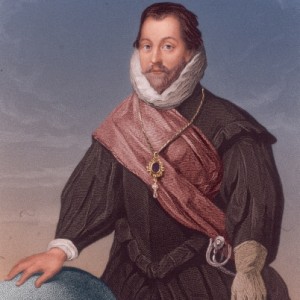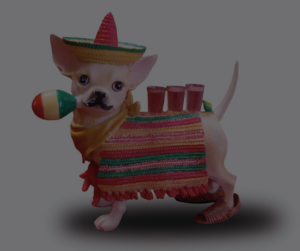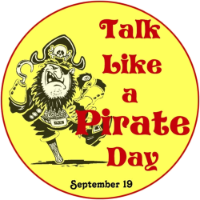
September 19, 2013 – International Talk Like a Pirate Day is a amusing holiday created in 1995 by John Baur (Ol’ Chumbucket) and Mark Summers (Cap’n Slappy), of Albany, Oregon, U.S., who proclaimed September 19th each year as the day when everyone in the world should talk like a pirate (honest I did not make this up). For example, an observer of this holiday would greet friends not with “Hello,” but with “Ahoy, matey!” Apparently the holiday, and its observance, springs from a romanticized view of the Golden Age of Piracy. It has become a holiday for members of the Church of the Flying Spaghetti Monster.
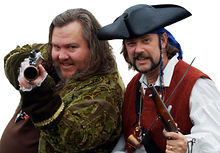
According to Summers, the day is the only holiday to come into being as a result of a sports injury. He has stated that during a racquetball game between Summers and Baur, one of them reacted to the pain with an outburst of “Aaarrr!”, and the idea was born. That game took place on June 6, 1995, but out of respect for the observance of D-Day, they chose Summers’ ex-wife’s birthday, as it would be easy for him to remember.
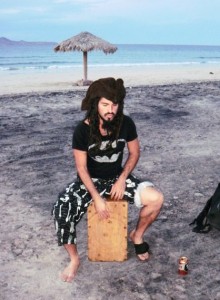
At first an inside joke between two friends, the holiday gained exposure when John Baur and Mark Summers sent a letter about their invented holiday to the American syndicated humor columnist Dave Barry in 2002. Barry liked the idea and promoted the day. Growing media coverage of the holiday after Barry’s column has ensured that this event is now celebrated internationally, and Baur and Summers now sell books and T-shirts on their website related to the theme. Part of the success for the international spread of the holiday has been attributed to non-restriction of the idea or trademarking, in effect opening the holiday for creativity and “viral” growth.
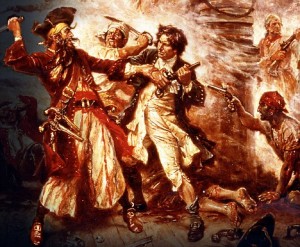
Baur and Summers found new fame in the 2006 season premiere episode of ABC’s Wife Swap, first aired September 18, 2006. They starred in the role of “a family of pirates” along with Baur’s wife, Tori. Baur also appeared on the June 26, 2008 episode of Jeopardy!, where he was introduced as a “writer and pirate from Albany, Oregon.”
The association of pirates with peg legs, parrots, and treasure maps, popularized in Robert Louis Stevenson‘s novel Treasure Island (1883), has had a significant influence on parody pirate culture. Talk Like a Pirate Day is celebrated with hidden easter egg features in many games and websites, with Facebook introducing a pirate-translated version of its website on Talk Like a Pirate Day 2008; Minecraft also features this language since January 5, 2012.
*The above information originates from Wikipedia for additional information see their website.
Did you know?
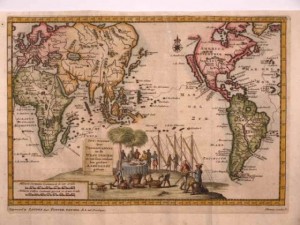
That it is well documented history that notorious pirates roamed, sailed and plundered in the cape area for almost 300 years. The pirates were mainly of Dutch, Spanish, English, and Chilean in origin. In the periods from the mid 1500′s to the 1800′s over 250 Spanish Gallons laden with their enormous cargos of valuable looted treasure from the Philippines [named Manila Galleons] passed through and stopped in the cape areas to prepare for their trips to Acapulco, the headquarters for new Spain (Mexico) and continuing to Spain.
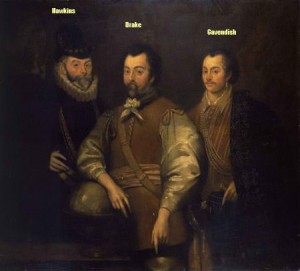
Sir Francis Drake, Thomas Cavendish, William Dampier, Woodes Rogers, Thomas Dover, and other English privateers left behind a colorful Baja legacy. In spite of Spain’s repeated attempts to colonize the peninsula, throughout the Spanish colonial period the pirates probably gained more wealth in the Californias than the Spanish themselves. They were among many who plagued the Manila galleons off the coast of the Californias, finding the bays and lagoons of Baja’s Cape Region perfect hiding places from which to launch attacks on treasure-laden ships.
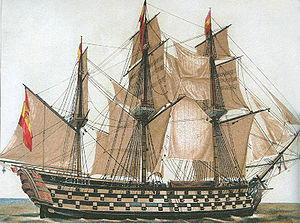
In La Paz, using their knowledge of the strong breeze that blows into the harbor every summer afternoon, the pirates attacked Spanish galleons while the vessels were effectively trapped in the bay. Four centuries after the first Manila-Acapulco voyages, this afternoon wind is still known as El Coromuel, named for the Puritan Cromwells-father and son- who ruled successively as Lord Protectors of England from 1653 to 1659.
The most notorious of the Pacific privateers was definitely Sir Thomas Cavendish, who plundered the Spanish galleon “Santa Anna” at Cabo San Lucas in 1587. There his two English vessels, Desire and Content, commandeered the Spanish ship (allegedly invincible) following a protracted sea battle. Cavendish set fire to the Santa Ana after looting its cargo holds and setting its crew and passengers ashore. The galleon was under the command of Tomás de Alzola and it had left the port of Cavite in the last week of June, some four-and-a-half months earlier. The Spanish crew later retrieved the burned hulk and restored it for a return to Acapulco.
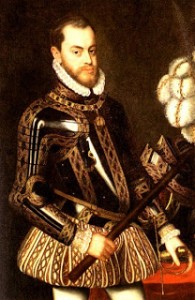
Meanwhile the plundered treasure was divided between the Desire and Content. The ships set sail for England immediately, but during the first night of their triumphant voyage the Desire disappeared. Cavendish reported in England that the captain and crew of the Desire must have scuttled the ship on a nearby island and disappeared with the loot. Neither the wreckage of the vessel nor the treasure was ever discovered; some historians speculate that at least part of the missing wealth remains buried near the Cape. As recent as 1974 while building the road to Pichelinque, the out of town road to the ferry terminal near la Paz, a pirate chest of plundered loot was discovered by road workers.
Also true that a number of “Dutch Hens” entered the Skull and Crossbones trade against the haughty Spanish, Joris van Spilbergen is likely the most famous of the group. Interesting enough famed corsair Woodes Rogers landed in La Paz after rescuing a seaman who’d been marooned five years on a deserted island off Chile’s coast in 1709. The rescued man was Alexander Selkirk, whose shipwrecked existence as a castaway became the inspiration for Daniel Defoe’s Robinson Crusoe, published in 1719. Selkirk was aboard Roger’s Dover when the crew captured the Spanish galleon Encarmacion off Cabo San Lucas in 1709; he served as sailing master on the ship’s return voyage to England the following year.
